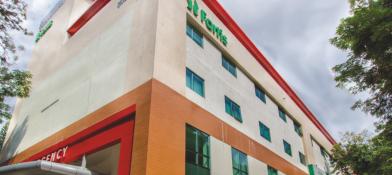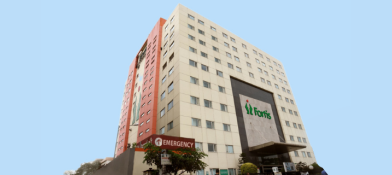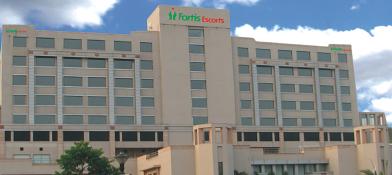Discogram
Overview:
Discogram, also called Discography, is used to diagnose chronic back pain. Doctors use this procedure to determine significant abnormalities in the spine when medicines and physical therapy have not helped. The method allows the doctor to know which disk is the cause of back pain and if the spine is damaged or worn out. It involves the injecting of a dye in the disks to make them visible during the scan.
Understanding the Spine
The spine disks in the body are like sponges in between the bones of the spinal cord called the vertebrae. These disks protect the spine and behave like shock absorbers and save the bones from rubbing against each other. However, if the disks are damaged or worn out, there is friction between the bones, resulting in pain.
Why Does One Need to Get a Discogram
- Doctors use this procedure to diagnose the reason for back pain and determine the health of the disks.
- The procedure is helpful for persistent neck pain.
- They use a discogram before spine surgeries to know which disk to remove.
- The procedure is recommended to determine the cause of the back pain if it persists and other treatments are not helping.
What To Expect While Getting a Discogram:
Before the Procedure Begins
- It is essential to follow instructions given by the doctor at all stages of the procedure.
- The doctor must know the entire medical history of the person, what medications they are taking, and if they have any allergies or are pregnant.
- It is advisable to have a friend or family member along during the procedure to drive or take the person home.
During the Procedure
- The person is asked to lie down on a table in an X-ray room.
- They are asked to sleep sideways and given pillows if there is pain.
- An IV is given during the procedure, and the patient's vitals are monitored. Sometimes, sedatives are given to relax the person.
- Local anesthesia is given in the back to numb that portion.
- A dye is injected into the spine through a needle. Some people who have a damaged disk may feel pain during the injection. If there are more disks to be studied, the same process is repeated for each disk.
- If there is bleeding, a bandage is placed over the area.
- The doctor uses fluoroscopy to generate images of the disk. They may also carry out other tests such as a CT scan or MRI for a more detailed diagnosis if required.
- The procedure lasts for about 50 to 60 minutes.
What Must One Expect After The Procedure is Completed
- It is expected that the patient will feel sore in the area where the injection is given, and the person may experience some discomfort there for a few hours. This can be managed effectivley with ice packs or painkillers.
- Most people can comfortably return to their normal activities and routines after 24 hours.
- The doctor or a radiologist will discuss the results of the procedure with the person. If the injected dye stays inside the disk, the result is expected. But if it seeps out, it indicates that the disk is damaged or worn out, and further treatment is required.
It is essential to call the doctor on the occurrence of the following persistent symptoms.
- Worsening back pain
- Newly developed pain in the neck
- Fever
- Any discoloration, swelling, or discharge at the site of the injection
What Are The Benefits Of The Procedure
- A discogram helps to find out if a particular disk(s) is the cause of persistent and excruciating back pain.
- No radiation remains in the body after the procedure is finished.
- There are no side effects.
- The discogram generates clear, detailed images of the bone, soft tissue, lungs, and blood vessels.
What are The Risks Involved
- Since a discogram involves the needle being penetrated through the skin, it carries a risk of the person getting infected.
- There is a chance that certain people may develop an allergic reaction to the dye that is injected during the procedure.
- Radiation exposure may cause cancer.
- The procedure is not recommended for pregnant women as it poses a risk to the unborn baby.
- Lactating women should let 24 hours pass before they start feeding the baby. This is important as the dye injected should be flushed out of the system.
- The back pain may worsen after the procedure.
- Some people may experience headaches and nausea after Discography.
- There can be temporary numbness and weakness around the injected site.
- There are some chances of nerve damage and bleeding during the procedure.
- In rare cases, paralysis may occur.
- The damaged disk may not always cause pain; hence, the results of a discogram must be used together with other tests, such as MRI or CT scanning, for accurate diagnosis of back pain and proper treatment.
Conclusion
Chronic back pain can significantly alter a person's life by disrupting their daily routine. If people have tried physical therapy and medication, then it is an excellent option to get a discogram done to understand the cause of back pain. A discogram may only be the option for some, but this procedure provides clear images of the disks in many cases and helps ascertain where and what the problem is. This can help lead a healthier and better quality of life. It is vital to consult a doctor before performing any test and follow instructions given by them at all stages.



















